Nomex and FR are materials used to create a variety of clothing and other items that are designed to protect people from heat, fire, and electrical hazards. But do you know the difference between Nomex and FR? Nomex is a meta-aramid synthetic fiber that is very strong and resistant to heat and electrical hazards. It is used to make protective clothing, curtains, and other items. FR, or flame-resistant, materials are either chemically treated or inherently resistant to combustion. These materials are used in a variety of settings, such as the military, fire departments, and other protective apparel.
They are designed to protect people from flash fires and electric arcs. Nomex and FR materials are both flame retardant and heat resistant, so they are essential to ensuring people are adequately protected against any potential hazards. These materials are used in a variety of industries for a wide range of applications and are important for safety and security. Here we will talk about the difference between Nomex and FR.
Differences between Nomex and FR
- Applications
Nomex and Flame Resistant fabrics offer different performance characteristics and applications. Nomex is a strong, lightweight, heat- and flame-resistant fabric made from aramid fibers, making it an excellent choice for protective clothing and other items. It is inherently flame-resistant, so it does not require any chemical treatment.
It is also lightweight and breathable, making it comfortable and effective for workers who will be exposed to high temperatures or flames over extended periods of time. It also has excellent cut and abrasion resistance, and is commonly used in industrial protective gear such as fire-resistant coats, pants, and boots.
Flame Resistant fabrics, on the other hand, are usually treated with a special chemical finish that makes them more resistant to heat and fire. These fabrics are heavier and less breathable than Nomex, so they are not ideal for extended exposure to high temperatures or flames.
Additionally, the chemical finish used to give the fabric fire-resistant properties can wear off over time, and the fabric is not as cut and abrasion resistant as Nomex. Due to their heavier weight and decreased breathability, Flame Resistant fabrics are better suited for items such as safety-coveralls and welding gloves, which do not require extended exposure to high temperatures or flames.
- Weight and Heat Resistance
For starters, Nomex is much lighter than FR clothing. It is made from a combination of nylon and other synthetic fibers which are highly flame resistant and will protect you from extreme temperatures up to 350 degrees Celsius for a short period of time.
However, the heat resistance of Nomex is not as good as that of FR clothing. It will only protect you from direct flames up to 800 degrees Celsius while FR clothing can protect you from direct flames up to 1500 degrees Celsius.
In addition, Nomex is highly breathable and will allow your skin to breathe which helps reduce the risk of heat exhaustion. On the other hand, FR clothing is not as breathable and will not provide the same level of air circulation. However, FR clothing is much thicker than Nomex and therefore provides some level of insulation which is beneficial in cold working environments.
- Water Resistance
Nomex and Flame Resistant (FR) clothing offer different levels of protection against water, and it is important to understand the differences in order to choose the proper fabric for a specific situation. Nomex is the superior option when it comes to water resistance.
It is a tightly woven fabric with a special chemical finish that repels water and helps prevent the garment from becoming saturated. FR clothing is not as water-resistant; it has a tendency to absorb water and lose its flame-resistant properties. It is best used in situations that do not involve contact with liquids.
FR fabric is designed to be lightweight and breathable to keep the wearer comfortable, but this breathability also leads to lower water resistance. Nomex is heavier, more tightly woven and does not provide the same level of breathability, but its superior water resistance makes it a better choice in situations where contact with water is unavoidable.
- Chemical Resistance
The chemical resistance of Nomex and flame resistant (FR) clothing can vary greatly depending on the type of chemicals being used. Nomex is a strong, synthetic material that is inherently flame-resistant and is known for its superior chemical resistance.
On the other hand, FR clothing is made from a variety of fabrics, some of which may be more resistant to certain chemicals than others. For example, some FR clothing may be more resistant to acids, while other FR clothing may be better suited for use around harsh alkalis. In addition, Nomex is generally more durable and will generally last longer than FR clothing.
This is due to the fact that Nomex doesn’t break down as quickly as FR clothing does when exposed to harsh chemicals. However, Nomex is also typically more expensive than FR clothing and may not be the best choice for workers who are exposed to a variety of chemicals on a regular basis.
Conclusion
Nomex and FR are both great options for clothing and other materials, but it’s important to consider the differences between them in order to make the best decision for your needs.
Nomex has the advantage of being lightweight and having a greater range of flame resistance, while FR is more durable and maintains its flame resistance even when wet. Depending on the specific application, either one of these materials could be the ideal choice for you.
Ultimately, it’s important to take the time to research the advantages and disadvantages of each material type so that you can make an informed decision that will meet your needs.
